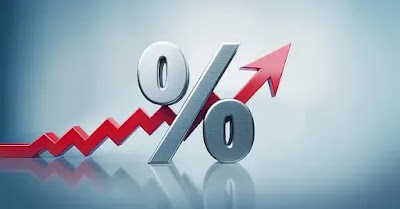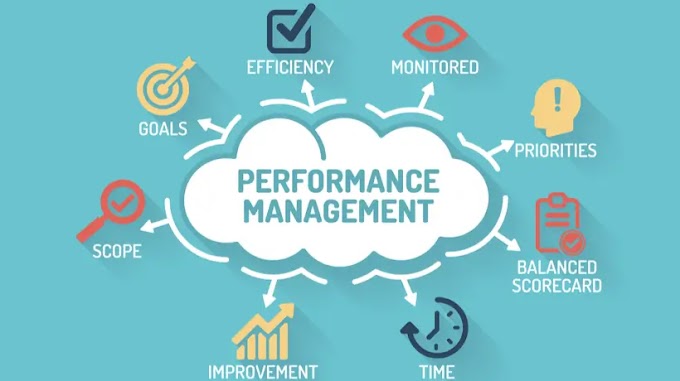The Federal Reserve System, also known as the Fed, is the central banking system of the United States. Established in 1913, its main purpose is to promote a stable and healthy economy through monetary policy, which involves setting interest rates and controlling the supply of money in circulation.
One of the key tools that the Fed uses to accomplish its goals is adjusting interest rates. Interest rates refer to the cost of borrowing money, and they play a critical role in the economy. When interest rates are low, borrowing money becomes cheaper, which encourages businesses to invest and consumers to spend. Conversely, when interest rates are high, borrowing becomes more expensive, which can lead to a decrease in spending and investment.
In this essay, we will examine the reasons why the Fed increases interest rates, the effects of those increases, and historical examples of interest rate increases. Additionally, we will discuss criticisms of the Fed's interest rate policy and alternative policies that could be implemented to promote economic stability.
I. Reasons why the Fed increases interest rates.
There are several reasons why the Federal Reserve might increase interest rates. Here are a few of the most common:
Control Inflation
Inflation can have negative consequences for the economy, such as reducing the purchasing power of consumers, reducing the competitiveness of businesses, and increasing uncertainty for investors. Therefore, controlling inflation is an important goal of the Federal Reserve.
One way that the Fed can control inflation is by increasing interest rates. When interest rates are higher, it becomes more expensive for individuals and businesses to borrow money. This, in turn, reduces spending and investment. The decrease in spending and investment can help to slow down economic growth and reduce the upward pressure on prices.
However, it is important to note that the Fed must strike a balance between controlling inflation and promoting economic growth. If interest rates are raised too high, it can lead to a decrease in economic growth, which can also have negative consequences for the economy.
Manage Economic Growth
The Federal Reserve also uses interest rate policy to manage economic growth. When the economy is growing too quickly, it can lead to imbalances such as inflation, an overheated housing market, and excessive speculation in the stock market. By increasing interest rates, the Fed can slow down economic growth and prevent these imbalances from occurring.
For example, in the late 1990s, the US economy was growing at an unprecedented rate due to the dot-com boom. The Fed increased interest rates in an attempt to slow down economic growth and prevent a bubble in the stock market. While this move was controversial at the time, many economists credit the Fed with preventing a more severe economic downturn when the dot-com bubble burst.
Stabilize the Economy
Finally, the Federal Reserve may increase interest rates to stabilize the economy during times of economic instability. For example, during a recession, the Fed may increase interest rates to encourage people to save money and reduce spending. This can help to reduce the severity of the recession and promote long-term economic stability.
During the 2008 financial crisis, the Fed lowered interest rates to near-zero to encourage spending and investment. As the economy began to recover, the Fed gradually increased interest rates to promote more stable economic growth. By doing so, the Fed helped to prevent a second recession and promote long-term economic stability.
Overall, the Federal Reserve uses interest rate policy to promote economic stability by controlling inflation, managing economic growth, and stabilizing the economy during times of economic instability. However, it is important to note that interest rate policy is just one tool in the Fed's arsenal, and that other policies such as fiscal policy and regulation also play important roles in promoting economic stability.
II. Effects of increasing interest rates.
When the Federal Reserve increases interest rates, it can have a range of effects on the economy. Here are a few of the most common effects:
Impact on Borrowing and Lending
One of the most direct effects of increasing interest rates is on borrowing and lending. When interest rates increase, it becomes more expensive for individuals and businesses to borrow money. This can lead to a decrease in borrowing and lending activity, as people and businesses may be less willing or able to take on new debt.
For example, if the Fed increases interest rates on mortgages, it may become more difficult for people to afford to buy homes, as the monthly payments would be higher. This could lead to a decrease in demand for housing, which could in turn lead to a slowdown in the construction industry.
Effect on Businesses and Consumers
Increasing interest rates can also have an effect on businesses and consumers in other ways. For example, higher interest rates can lead to a decrease in consumer spending, as people may have less disposable income to spend on non-essential items. This, in turn, can lead to a decrease in profits for businesses that rely on consumer spending.
In addition, higher interest rates can make it more expensive for businesses to invest in new equipment, hire new employees, or expand operations. This can lead to a decrease in economic growth and job creation.
Effect on Foreign Exchange Rates
Finally, increasing interest rates can also have an effect on foreign exchange rates. When interest rates in one country increase relative to other countries, it can make the currency of that country more attractive to investors. This can lead to an increase in demand for that currency, which can in turn lead to an increase in the value of the currency relative to other currencies.
For example, if the Fed increases interest rates in the US, it may make the US dollar more attractive to foreign investors. This could lead to an increase in the value of the dollar relative to other currencies, which could make US exports more expensive and reduce demand for US goods and services.
Overall, the effects of increasing interest rates can be complex and far-reaching. While the goal of the Federal Reserve is to promote economic stability, the effects of interest rate policy can vary depending on a range of factors, such as the current state of the economy, the behavior of investors and consumers, and global economic conditions.
III. Historical examples of the Fed increasing interest rates
The Federal Reserve has a long history of adjusting interest rates in response to changes in the economy. Here are a few examples of significant interest rate increases in the past:
The 1970s and 1980s
During the 1970s and 1980s, the US experienced high levels of inflation, which prompted the Federal Reserve to increase interest rates in an effort to control inflation. In 1980, for example, the Fed increased interest rates to nearly 20%, the highest level in US history. While this move helped to bring inflation under control, it also led to a recession and high levels of unemployment.
The 2000s
In the early 2000s, the US economy experienced a period of rapid growth and low unemployment, but also a housing bubble and other imbalances that eventually led to the 2008 financial crisis. In response, the Federal Reserve lowered interest rates to near zero in an effort to stimulate the economy and prevent a more severe downturn. However, after several years of low interest rates, the Fed began to increase rates again in 2015, as the economy began to recover and inflation started to rise.
Recent increases
In the years since the 2008 financial crisis, the Federal Reserve has generally kept interest rates low in an effort to promote economic growth and job creation. However, as the economy has continued to recover and inflation has started to rise, the Fed has gradually increased interest rates. For example, the Fed raised interest rates four times in 2018, but has since lowered rates again in response to the economic effects of the COVID-19 pandemic.
Overall, the history of interest rate policy in the US highlights the complex trade-offs involved in managing the economy. While higher interest rates can help to control inflation and promote economic stability, they can also lead to higher unemployment and slower growth. Similarly, while lower interest rates can stimulate economic growth, they can also lead to inflation and other economic imbalances. As such, the Federal Reserve must carefully consider a range of factors when making decisions about interest rate policy, including the current state of the economy, inflation, and global economic conditions.
V. Criticisms of the Fed's interest rate policy
While the Federal Reserve's interest rate policy is generally viewed as an important tool for managing the economy, it has also faced criticism from some quarters. Here are a few common criticisms of the Fed's interest rate policy:
Too much emphasis on inflation
One common criticism of the Federal Reserve is that it places too much emphasis on controlling inflation, at the expense of other economic priorities such as job creation and economic growth. Critics argue that the Fed's focus on inflation can lead to unnecessarily high interest rates and slower economic growth, particularly for low-income and marginalized communities.
Negative effects on the economy
Some economists argue that the Fed's interest rate policy can have negative effects on the economy, particularly during periods of economic uncertainty. For example, high interest rates can lead to higher borrowing costs for businesses and consumers, which can in turn reduce spending and slow economic growth. Similarly, low interest rates can create incentives for investors to take on excessive risk, leading to asset bubbles and other economic imbalances.
The need for alternative policies
Some critics argue that the Federal Reserve should explore alternative policies for managing the economy, beyond simply adjusting interest rates. For example, some economists have proposed the use of more targeted fiscal policies, such as government spending on infrastructure or social programs, as a way to stimulate economic growth and job creation. Others have suggested that the Fed could adopt more unconventional policies, such as negative interest rates or "helicopter drops" of money into the economy, to promote economic growth.
While these criticisms of the Fed's interest rate policy are not without merit, it is important to remember that the Federal Reserve operates in a complex and ever-changing economic landscape. The Fed must balance a range of economic priorities and risks when making decisions about interest rates and other policies, and must also remain responsive to changing economic conditions and global trends. As such, while the Fed's interest rate policy is not perfect, it remains an important tool for managing the economy and promoting economic stability and growth.
👉 Read more posts with the same topic
VI. Conclusion
In conclusion, understanding why the Federal Reserve increases interest rates is crucial for understanding the overall health of the economy. The Federal Reserve System, with its dual mandate of promoting maximum employment and price stability, plays an important role in managing the economy through its monetary policy decisions.
The primary reasons why the Fed increases interest rates are to control inflation, manage economic growth, and stabilize the economy. By raising interest rates, the Fed can slow down economic growth and prevent the economy from overheating, which can lead to inflation and other economic imbalances.
However, raising interest rates can also have significant effects on borrowing and lending, businesses and consumers, and foreign exchange rates. It is important to understand these effects in order to make informed decisions about financial and investment strategies.
While the Fed's interest rate policy is an important tool for managing the economy, it has faced criticisms from some quarters. These criticisms include concerns about too much emphasis on inflation, negative effects on the economy, and the need for alternative policies.
In the end, it is important to remember that the Federal Reserve operates in a complex and ever-changing economic landscape. While the Fed's interest rate policy is not perfect, it remains an important tool for managing the economy and promoting economic stability and growth. By understanding the motives and effects of the Fed's interest rate decisions, individuals and businesses can make informed decisions about their finances and investments, and contribute to a healthy and prosperous economy.
Thank you for reading.








0 Comments